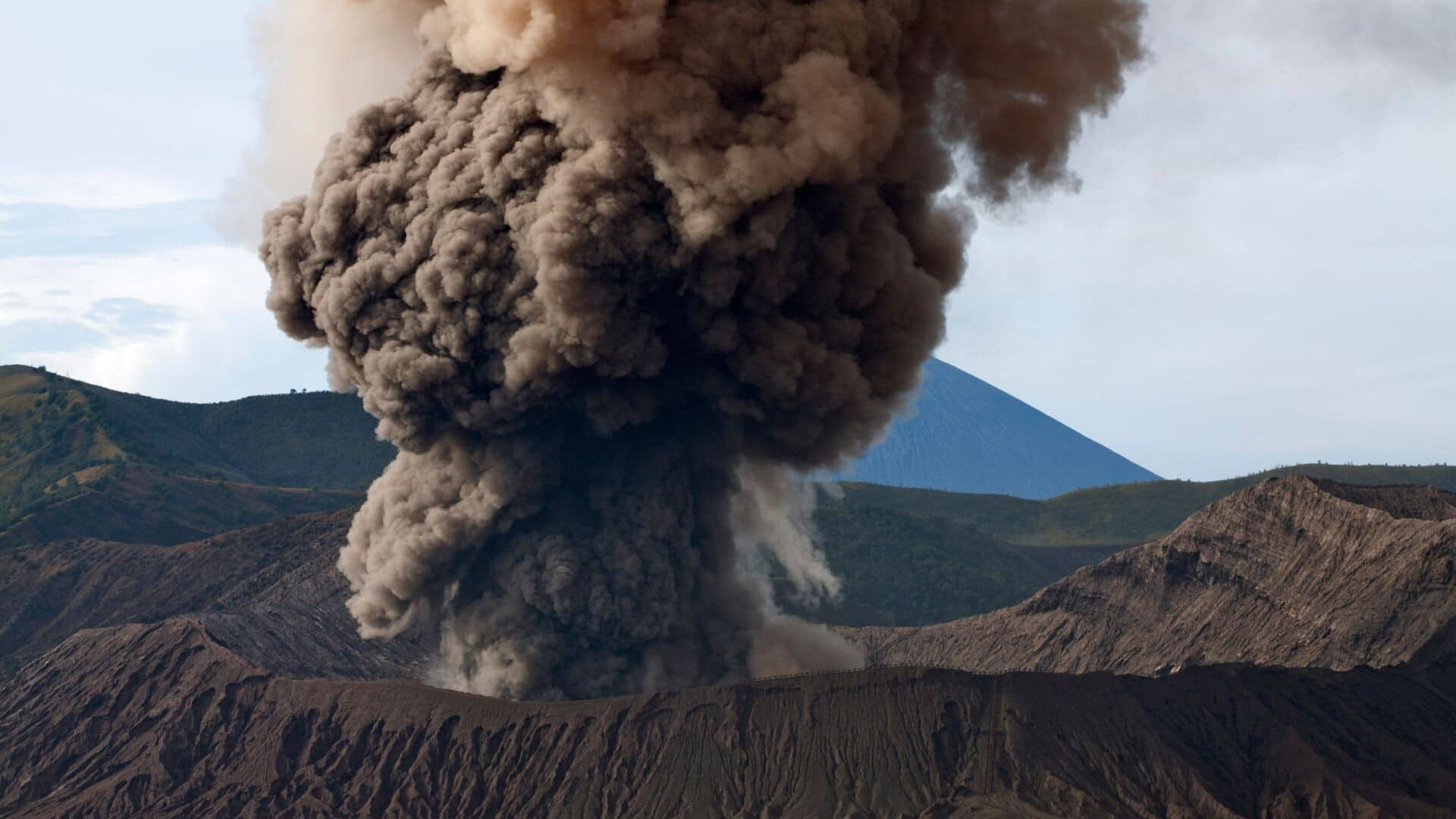This volcanic eruption in 2022 cooled the Earth
What's the story
Contrary to initial speculation, the 2022 Hunga Tonga volcanic eruption in the South Pacific Ocean, resulted in a cooling effect on Earth, according to a recent study.
The research was led by Dr. Andrew Dessler, an atmospheric scientist at Texas A&M University.
Historical data supports these findings, indicating that large volcanic eruptions typically cool the global climate, due to sunlight being blocked by volcanic aerosols.
Volcanic impact
Unique eruption injects unprecedented water vapor into stratosphere
The Hunga Tonga eruption, which occurred over two days in mid-January 2022, was unique due to its submarine nature.
This resulted in an unprecedented amount of water vapor being injected into the stratosphere, thus increasing total stratospheric water content by approximately 10%.
The researchers noted that this increase in water vapor, a potent greenhouse gas, contributed to the cooling of Earth.
Scientific analysis
Satellite data reveals eruption's cooling effect on climate
The research team utilized satellite data observations of aerosols as well as water vapor, among other variables, to estimate the energy balance of Earth's climate system.
Their analysis revealed that more energy left the climate system than entered it following the eruption, resulting in a slight cooling effect.
"Our paper casts doubt on the explanation that the eruption caused the extreme warmth of 2023 and 2024," Dessler explained.
Climate change
Human-induced emissions main cause of global warming
Dessler emphasized that human-induced greenhouse gas emissions should be considered the primary cause of global warming, with contributions from ongoing phenomena like El Nino.
This research dismisses the volcanic eruption as a major factor in recent warming, reinforcing Dessler's point that human activity is primarily driving climate change.
The study's focus is particularly relevant amid ongoing debates and misinformation about the causes of global warming.
Future implications
Research highlights need for continued satellite measurements
The study underscores the importance of continued investment in satellite-based stratospheric measurements.
Despite answering several key questions, Dessler acknowledges that the research also raises new ones.
Unresolved issues include the too low levels of sulfur dioxide produced by such a violent eruption, and the minimal impact the eruption had on the 2023 ozone hole.
